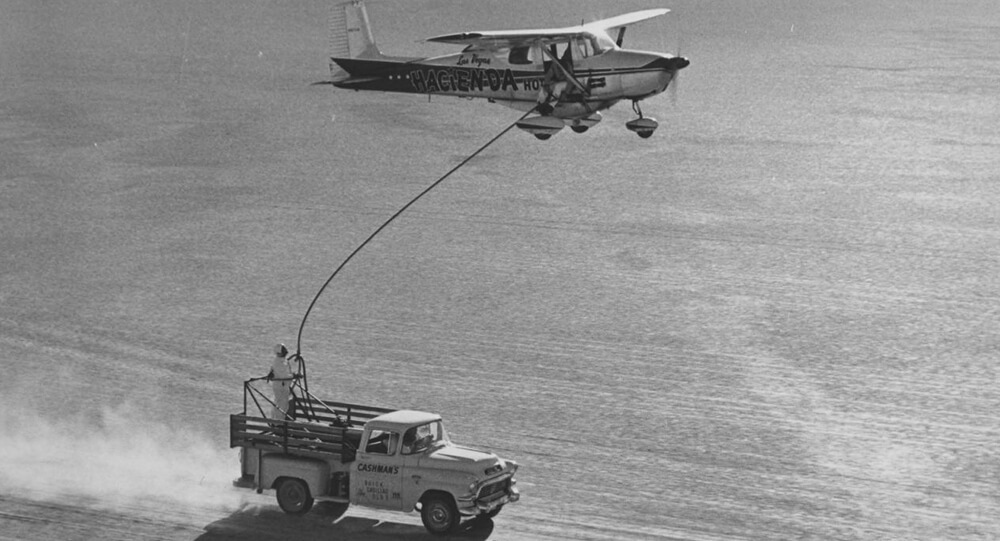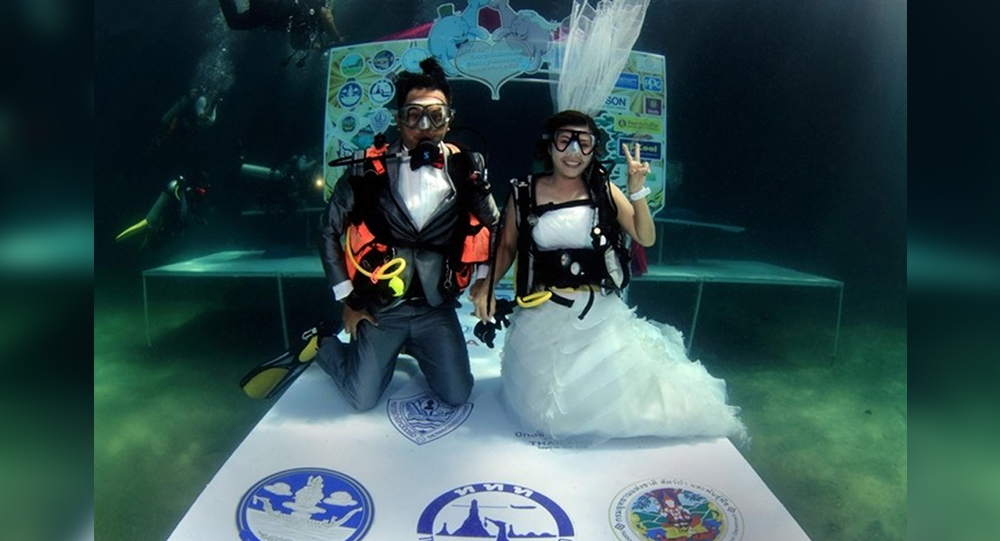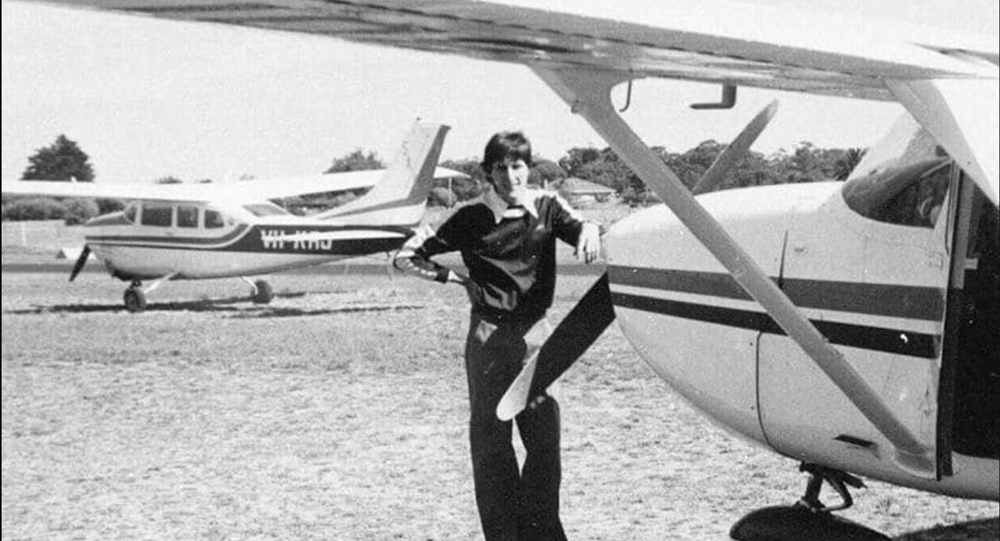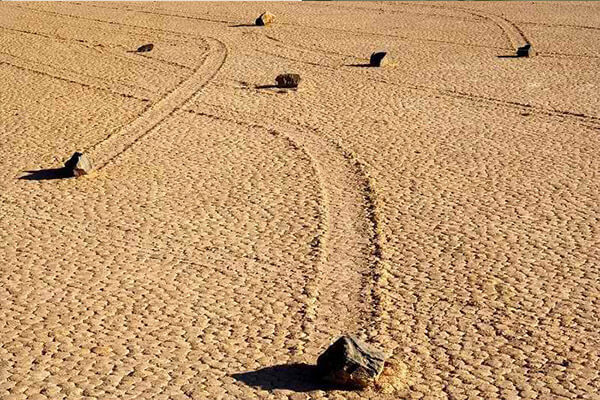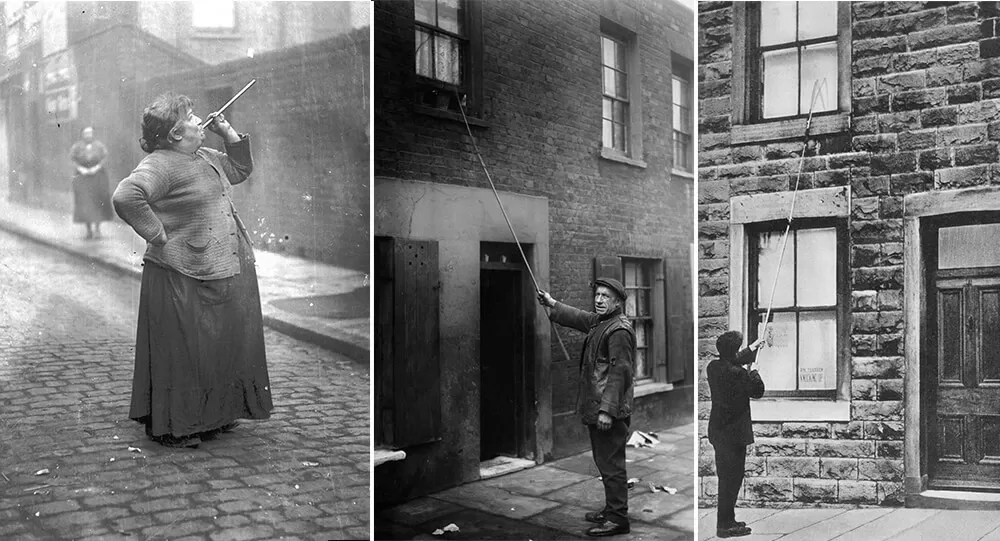Just four hours short of breaking the record for the longest continuous flight, the unmanned aircraft, operated by the US Army and built by Airbus, flew for 64 days, 18 hours, and 26 minutes before unexpectedly coming down in Arizona.
Robert Timm and John Cook broke that record in 1959, when they spent 64 days, 22 hours, and 19 minutes flying over Las Vegas in a four-seater aircraft.
It’s amazing that the Zephyr, a modern light aircraft flying autonomously, not only was unable to beat that record, but even if it had, Timm and Cook would still have held the world record for crewed flight endurance.
Timm and Cook’s ability to stay in the air for so long in a time that was closer to the Wright brothers’ first flight than today is nothing short of amazing.
The fuel problem
At the southern end of the Las Vegas Strip, the Hacienda hotel and casino opened its doors in 1956.
It was one of the first family-friendly resorts in Las Vegas, and in an effort to gain publicity, the hotel’s owner decided to follow the advice of one of his staff members: fly a plane with the hotel’s name on the side and attempt to break the record for flight endurance, which was set in 1949 and stood at almost 47 days in the air.
The employer, Robert Timm, a former World War II fighter pilot who is now a slot machine repairman, was paid $100,000 to organize the event, which was later connected to a fundraising effort for cancer research.
Timm spent months altering the Cessna 172 he had selected as his ride: “It was a relatively new design,” explains Janet Bednarek, an aviation historian and professor at the University of Dayton. It’s a large four-seater aircraft that has a reputation for dependability and being quite simple to fly, so you don’t have to focus on it constantly. And if you’re flying for a long time, you want a plane that would just kind of hum along.
A mattress for sleeping, a tiny steel sink for personal hygiene, the removal of the majority of the interior fixtures to reduce weight, and a crude autopilot were among the improvements.
But creating a means of refueling was crucial, according to Bednarek. Although there had been many aerial refueling tests up to this point, it was impossible to adapt a Cessna 172 such that it could be refueled in flight. So they placed a second tank on the ground that could be filled by a truck. When they needed to refuel, they would land and fly extremely slowly, barely above stall speed, until the truck arrived and pulled a hose up before using a pump to pump fuel into the aircraft. Because they occasionally had to fly at night and that needed some precise flying, it was really a stunning display of airmanship.
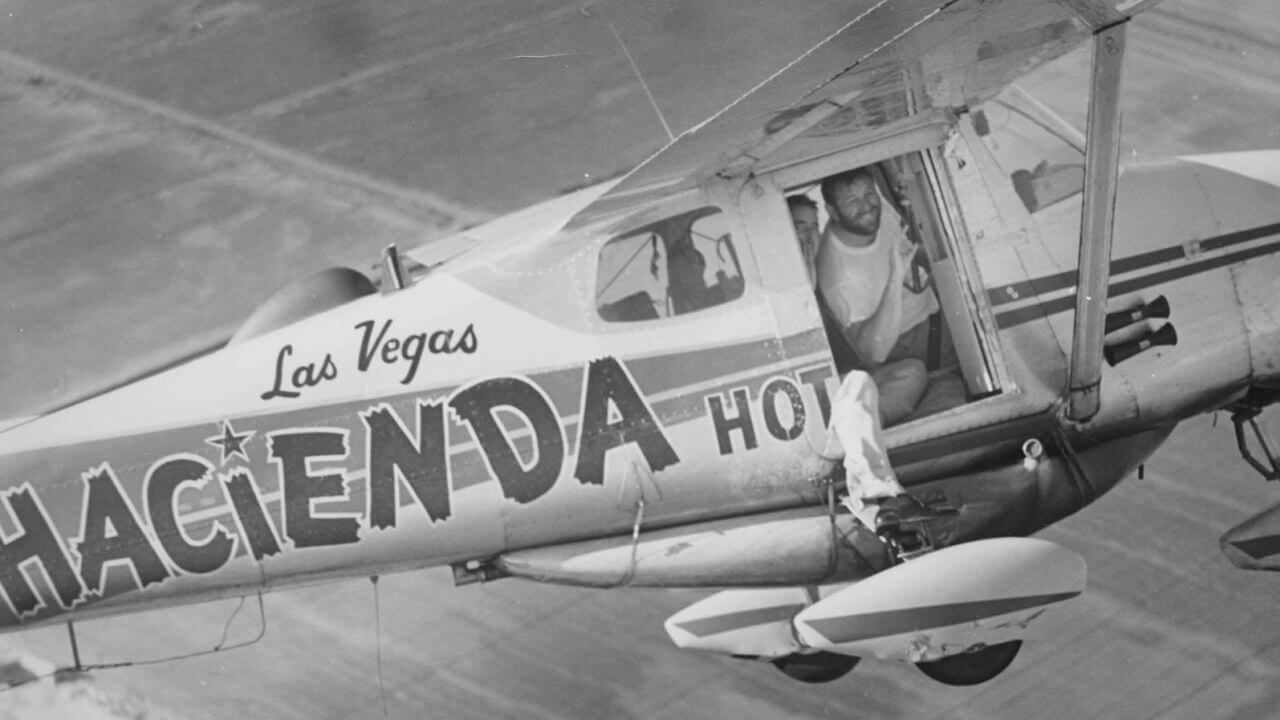
Fourth time’s a charm
Mechanical issues put a premature halt to Timm’s first three efforts at the record, the longest of which left him and his co-pilot in the air for roughly 17 days. However, another team, also using a Cessna 172, beat the record itself in September 1958; it was now longer than 50 days.
Timm chose John Cook, a fellow technician, as his new co-pilot for his fourth try after having trouble getting along with his first.
On December 4, 1958, they took off from McCarran Airport in Las Vegas. Similar to previous attempts, the first step was to fly low over a moving vehicle in order to paint one of the landing wheels and rule out cheating: “There wouldn’t have been any way to track their altitude and airspeed at all times,” says Bednarek, “So they painted a white stripe on at least one of the tires.” If they had ever landed, that would have been scratched, and before touching down they would check to make sure no paint had been removed.
The first part of the flight proceeded without a hitch, and the two of them spent Christmas Day in the air. Every time they refueled, they would also pick up supplies and food in the form of meals from the Hacienda’s restaurants that had been mashed up to fit into Thermos flasks so that it would be easier to send them up to the plane. This happened along a stretch of relatively straight road along the California-Arizona border.
A foldable camp toilet was used for bathroom breaks, and the used plastic bags were afterwards dumped over the desert. More space was available for shaving and bathing on the side of the co-pilot thanks to an extended platform (a quart of bath water would be sent up every other day).
The two would alternate sleeping, although a sound night’s sleep was impossible due to the constant engine noise and aerodynamic vibrations. Due to lack of sleep, Timm fell asleep at the controls on day 36, causing the plane to fly by itself for over an hour at a height of only 4,000 feet. Although just a few days later it would quit functioning entirely, the autopilot had saved their lives.
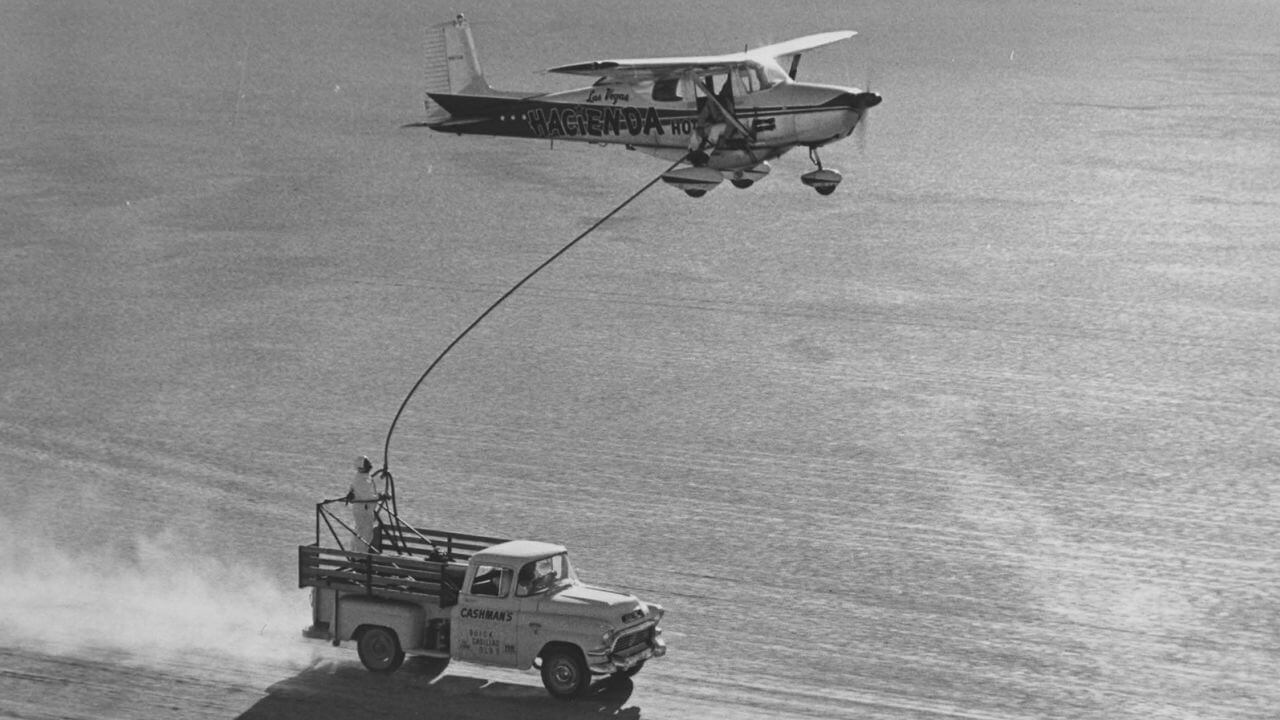
The end, at last
The electrical pump that delivered the fuel to the plane’s tanks failed on day 39, forcing them to begin finishing the process manually. The cabin heater, the fuel gauge, and the landing lights were among the technical failures on the list when they ultimately broke the record on January 23, 1959: “The important thing was that the engine continued going, which is really sort of astonishing. Flying takes a lot of time. Even if you maintain it fueled and greased, friction and heat will eventually lead to issues, according to Bednarek.
However, the two continued to fly for as long as they could to ensure that their new record would never be surpassed. They continued for an additional 15 days before, on February 7, 1959, ultimately landing at McCarran after more than two months and 150,000 miles of nonstop travel.
Bednarek continues, “They had decided that they had passed the point where nobody else was going to do this—and nobody has.
“I believe they came down because they decided it wouldn’t have helped them to crash when they reached the end of the rope. They weren’t in the best of health; even though they moved around in the airplane, they couldn’t stand up or stretch, much alone exercise or go for a stroll. We know that such a long period of inactivity may be detrimental to the body.
“Sitting for 64 days would be like that; it is bad for the human body. They needed to be removed from the airplane by hand.
Will a human crew ever surpass this record? Bednarek thinks it would only be possible if an aircraft was testing a novel sort of propulsion or energy source to demonstrate its viability.
When asked if he would ever attempt it again, co-pilot John Cook replied, “Next time I feel in the mood to fly endurance, I’m going to lock myself in a garbage can with the vacuum cleaner running, and have Bob [Timm] serve me T-bone steaks chopped up in a Thermos bottle. Until my psychiatrist starts seeing patients in the morning, that is.
